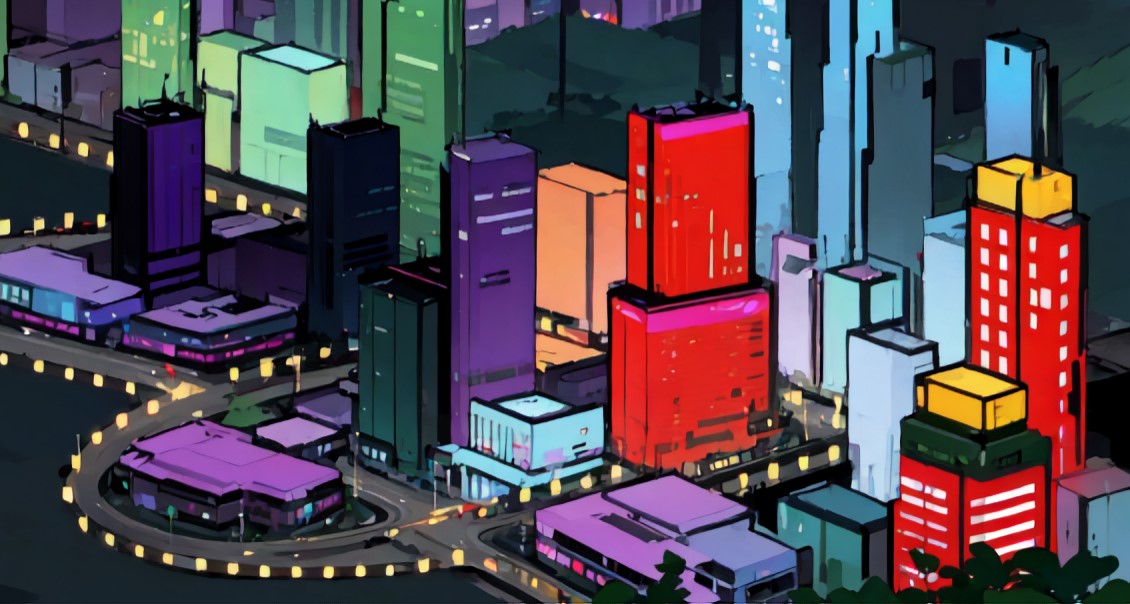QunYing City
Country: Malaysia
Establishment:2004
Establishment of the local Municipal Committee: 2006
City status:2008
Government : Type-- Autonomous Municipality, Collective committee, Progressivism,
Nonpartisanship, Corporatocracy(accused), Authoritarianism(accused), Hybrid Regime(accused) | Body-- QunYing city Municipal Committee | City Lord-- Toh Hak Sen
Location: Bentong,Pahang; Jelebu, Negeri Sembilan; Hulu Langat, Selangor
Population: 971000+
QunYing City (群英市) also knew as City of QunYing, or QYC , it's a city founded by Progressive Entrepreneur Toh Hak Sen. The city is located on Malaya peninsula, the border between Selangor, Pahang and Negeri Sembilan. It is also home to the Transnational Enterprise and BioTech Giant Docson Industries. The city original purpose is to serves as settlement for Chinese form different parts of SEA; eventually grows into High-Tech, multicultural and economic hub of Malaya peninsula.
- History:
Before 2004, This place is a run by by Malaysian Department of Wildlife and National Parks. And Gunung Nuang is one of the few mountains of this region Its peak borders Pahang and Selangor state and is close to the Pahang-Selangor-Negeri Sembilan border tripoint, Toh Hak Sen arrive to this place at 1999 on a hiking trip; found it would be a perfect spot to develop a settlement.
on the year 2004, duel to the effects of First Corporate War. Toh Hak Sen ready to create a city that'll be a haven for all South East Asia's Chinese, Progressivists, Other Minorities even Socialists. After buying some lands form Hulu Langat, Bentong and Jelebu. The construction of the city began at Oct 1 2004, although a slight short 25km distance away Kuala Lumpur & 44km form Putrajaya; The Malaysia Federal Goverment had little attention on Toh's project. During the construction of the settlement; thousnad of Urban planners, Civil Engineers and millions of workers pour their souls into it. Toh ensure that all who's participate the project will earn what they deserve. The city's construction are full completion at Feb 10 2008 and accepted their first permanant risident; mostly the ones who constructed the city (Both White & Blue collars) as their new home.
During the custruction of the city, Toh Reorganize the Chinese Medicine Enterprise, AnJia Pharma: left by he's father into a Pharmaceutical Biotech giant-Docson Industries. With him and he's fellow partners; Qiao Fan Yuan and Chen Jun-Ing form Qiao Pharmaceutical Pty Ltd. They began a venture on devoloping high-tech bioware that'll change the world and creating a safe enviorment for the people whom suffer form exploitation by Plutocrats and Tycoons.
On late 2008, Toh invited Socialist activist- Wong Ming Cen to join he's enterprise as the Union Chairman. With both men established trust to each other; Wong's able to impliment the new Ideology as "Thrid Socialism" into part of the City and Toh able to focusing he's work and dealing with bureaucrat elites without fear of having workers's dissatisfaction. On May 1 2009, QunYing's newly develop administrative district-commune district lauched and quickly gain favor among the working-class.
- Geography:
it's location on the State Boundary of Selangor-N.S-Pahang with mountainous terrain, there were two forest reserve before a city is built on here like: Gunung Nuang Recreational Forest and Lentang Forest Reserve, Eventually these were sold by State Government to Toh Paying off national debt. Though environmental and animal welfare groups accuse Toh's privatization; but he ensure local wildlife and plants well protected and resettle them a new home. There're multiple natural resources like: timber, tin and quartz that Toh's team's dicover but decide not to exploit it. Kem Lolo provide a perfect water source for the Constructers whom building the city; though with the completion of the city as creek and cascade dwindling, Toh ensure the water source will be protect and maintain. Following the city's development; many small hills were bulldozed and made way for urban infrastructure construction, the only few hills that left is the one that nears the Administrative area, Technology district and northern area.
- Economics and Industry:
At the initial development phase of the city; they focusing on infrastructure, by establishing of district A1, A2, and A3; district A1 were primarily designated as a test zone for street planning, construction materials testing and comprehensive district for future city planning. It also serve as residential and living area accommodating workers, engineers, and other construction personnel. Small vendors and food stalls quickly set up shop to provide daily necessities for the builders, district A2 is an industrial area for processing raw materials that obtained from deforestation and levelling of hills, through the exploitation of natural resources like; Timber, minerals, and other resources, Toh processed these materials efficiently at low cost and exported them to generate additional revenue for the city construction, district A3 initially served as the administrative, City's project exhibition canter and planning canter but gradually evolved into the core zone for urban management. A significant portion of funds was allocated through the development of transportation networks (roads and overpasses), water supply systems, and energy infrastructure, that lays the foundation for future growth. As the city's construction are finish, the economics of the city gradually diversified, a surge of immigrations ensure a multi-Industry collaborative development of real estates around the area, Qunying city also attracted significant investment from multinational corporations, particularly in the finance or real estate sectors, these industries created numerous high-paying jobs and established Qunying city as a regional financial hub. Toh also introduced High-Tech agriculture, piloting them in the west side of the city and surrounding areas. utilizing modification technology, it rapidly developed a model of high-yield and sustainable agriculture, providing food security and export revenue. By the creation of Industrial district; the city simultaneously advanced manufacturing and cutting-edge processing technologies, focusing particularly on cybernetic, electronics components and precision instruments, as well as traditional manufacturing. Service and Cultural sector also a vital parts of the city. trade centres, large shopping malls, and cultural gradually emerging. As immigrations coming in, it has become a convergence point of different Chinese and South-East Asian culture, with thriving traditional cultural and modern cultural industries. As artists and cultural workers form different parts of SEA pours into the city.
Following the research and development of Nitron, Introduction of Cyberware and Bioware technology; a surges of technology and economic explosion had appear on the city with these hit the market . Nitro technology able enhance human fitness, manipulate body composition, organ regeneration, age rejuvenation and maturation also granting individual superhuman abilities, Cyberware and Bioware also a key merchandise of the city.
- Cultures and Demographics:
as a predominantly Chinese Malaysian metropolis, showcases a high degree of Sinicization combined with a unique South East Asia cultural style. Its culture reflects a profound fusion of tradition and modernity, as well as Eastern and Western influences. Since 2008, as the city developed economically and educational opportunities increased, a large influx of Chinese arrived seeking better job and living conditions. These individuals primarily include those of Chinese descent from Singapore, Malaysia, Thailand, Indonesia, the Philippines, Vietnam, and Myanmar. Following the widen of immigration policies by Toh, other Southeast Asians including Thais, Filipinos, Vietnamese, Cambodians, Laotians, and Burmese began migrating to to the City. These groups are mainly employed in the service industry and technical jobs, gradually integrating into the local community. Tamils from Malaysia, India or Sri Lanka also part of the demographic of the City. The Malay community primarily moved to the City to escape stringent religious policies, seeking greater religious freedom and economic opportunities. Many Japanese and Koreans have also come to work and live here, playing significant roles in finance, technology, and education. Europeans, Americans, Arabs, and Africans also came be found here, although small in number, this group largely consists of students, technical experts, and scholars. Their presence enhances the international character of Qunying City, bringing new perspectives and skills to the local academic and technological development.
As an emerging city in Malaysia, it is distinguished by predominantly Chinese population, displaying a strong Sinicized cultural influence, while also incorporating the unique flavors of Southeast Asia. Although Malay is the official language, Chinese and English are more commonly used in daily work and life. Chinese characters on city signs are ubiquitous, reflecting the profound impact of Chinese culture. The architectural style of the City is a blend of modern and traditional. The cityscape features a mix of neo-futurist architecture, classical decorative styles, modern Chinese architectural influences, and Southeast Asian designs, creating a unique visual landscape. Qunying City celebrates Malaysia’s official holidays as well as various local festivals such as the Lunar New Year, Mid-Autumn Festival, Dragon Boat Festival, and other ethnic festivals like Songkran, Loi Krathong, Ullambana, and Children's Day. In terms of cuisine, the hawker culture is prevalent, offering a variety of authentic stir-fried dishes. Tea room and teahouse cultures are also widespread, forming an integral part of daily life. Additionally, mamak stalls are popular for their unique SEA flavors. Regarding attire, residents dress casually. Some wear traditional Hanfu, while among the youth there is a trend towards modern Chinese-style clothing. There is also a niche group that incorporates punk styles, demonstrating the diversity of the city’s fashion culture. Traditional Chinese opera, lion and dragon dances, and traditional crafts have a solid foundation in here. Various martial arts are also highly popular, attracting enthusiasts and experts for exchanges and demonstrations. Although societal customs are generally secularized, residents of Qunying City still uphold traditional Chinese virtues such as filial piety, humility, and mutual support, values that are still widely revered in modern society
- Politics & Governance:
- Education and Technology:
- Traffics:
- Attractions:
Remove these ads. Join the Worldbuilders Guild










Comments